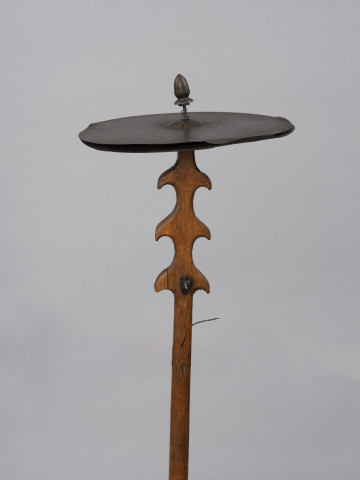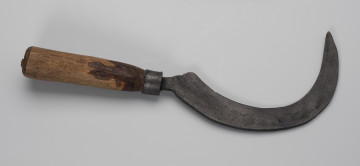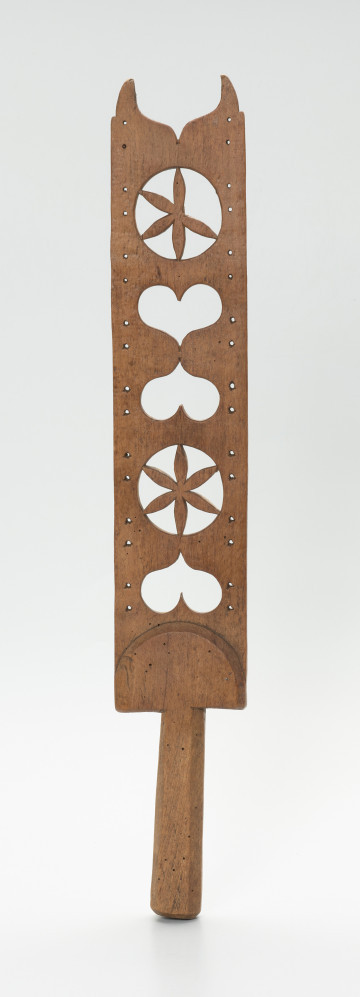
Bladder fiddle (Deil's fiddle)
1901 — 1945
National Museum in Szczecin
Part of the collection: Material culture of West Pomerania
The end of the harvest was a special time for the villagers. It was a time when dożynki were celebrated, a festival dating back to the pre-Christian era. Dożynki were first and foremost an expression of gratitude for the abundant harvest, and of hope that it will be repeated in the next year. It was also an opportunity to have some fun together after all the hard work in the fields. Dożynki had their own system of rules and were celebrated in accordance with predetermined routines defined by the local traditions. In Pomerania, an important role in the celebration played the so-called dziad żniwny, der Alte, an old man. It was a quite large puppet, formed to resemble a human figure, made from the last sheaf tied at the very end of the harvest. This effigy was then dressed in an old cloth and a hat or decorated with flowers and ribbons, and then ceremoniously carried or transported through the village to a farmer’s barn. Along the way, making a lot of noise, the harvesters poured copious amounts of water over it, symbolically transferring its purifying power to the whole harvest. The ritual was followed by refreshments and a dance party. There is one dziad żniwny in the collection of the Department of Ethnography of Pomerania of the National Museum in Szczecin. It comes from the early 20th century from the town of Żelkówko in Słupsk poviat. This effigy was made using a wicker weaving technique, its straw body is supported by a wooden cross, the head was made of wheat ears.
Agnieszka Słowińska
Author / creator
Dimensions
cały obiekt: height: 138 cm, width: 68 cm
Creation time / dating
Creation / finding place
Identification number
Location / status

1901 — 1945
National Museum in Szczecin

1901 — 1945
National Museum in Szczecin

2. połowa XIX wieku
National Museum in Szczecin
DISCOVER this TOPIC
Castle Museum in Łańcut
DISCOVER this PATH
Educational path